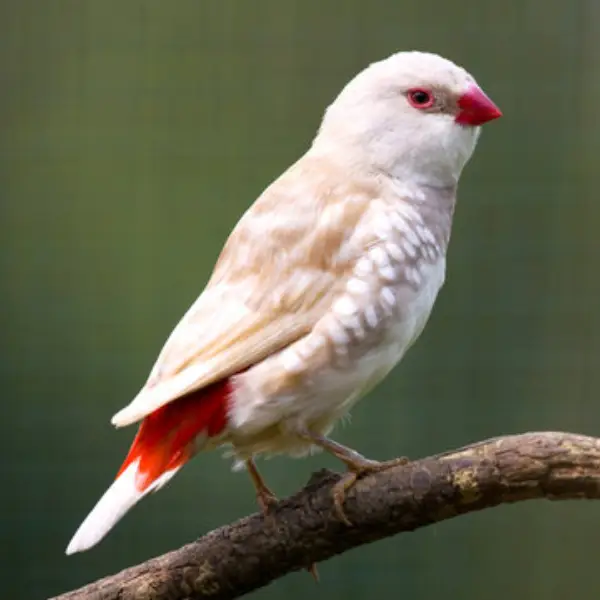Free shipping order over 20,000
Budgerigar (Red Eye)
₨ 1,875 Original price was: ₨ 1,875.₨ 1,500Current price is: ₨ 1,500.
- Scientific Name: Melopsittacus undulatus
- Size: Approximately 18 cm (7 inches) in length.
- Weight: Around 30-40 grams (1-1.4 ounces).
- Color:
- Body: The body color of the Red Eye Budgerigar can vary widely depending on the specific color mutation, including greens, blues, yellows, and whites.
- Wings: The wings may show patterns or barring that are typical of the budgie species.
- Face: The face color varies with the mutation but can be yellow, white, or other colors.
- Beak: Small, curved, and generally a pale color such as yellowish or orange.
- Eyes: The most distinguishing feature of this mutation is the bright red eyes, which provide a striking contrast to the body color.
- Legs and Feet: Usually grey or pinkish.
SKU: REF. LA-5766-10-1-1-1-1-1-1-1-1-1-1-1-1-1-1-1-1-1-1-1-1-1
Categories: PARROTS, Uncategorized
Tag: parrots
Share
Share on facebook
Share on email
Important Keys:
Habitat
- Distribution: Budgerigars are native to Australia and are found in open woodlands, grasslands, and scrublands. The Red Eye mutation is a result of selective breeding and is predominantly found in captivity.
- Environment: In captivity, they thrive in spacious cages or aviaries with plenty of toys, perches, and social interaction. Mimicking their natural environment with ample space for flight and enrichment is beneficial.
- Social Structure: Budgerigars are social birds that enjoy the company of other budgies or similar-sized birds. They also bond well with human caregivers.
Diet
- Primary Food: In the wild, budgerigars primarily eat grass seeds and forage for a variety of seeds and fruits.
- Captivity Diet: In captivity, they should be fed a balanced diet that includes high-quality seeds, pellets, and a variety of fresh fruits and vegetables. They also enjoy leafy greens and millet sprays.
- Feeding Behavior: Budgies are active feeders and benefit from foraging opportunities, such as hiding food in toys or offering fresh branches to chew.
Breeding
- Breeding Season: Budgerigars can breed year-round in captivity. In the wild, breeding typically occurs during the rainy season.
- Nest Location: In the wild, they nest in tree hollows. In captivity, they use nest boxes.
- Egg Quantity: Clutches usually consist of 4-6 eggs.
- Incubation Period: The female incubates the eggs for about 18-21 days.
- Fledging: Chicks fledge approximately 4-5 weeks after hatching but continue to be fed by the parents for several weeks afterward.
Lifespan
- In the Wild: Budgerigars generally live around 5-8 years.
- In Captivity: With proper care, they can live up to 10-15 years or more.
Behavior
- Temperament: Budgerigars are known for their playful, curious, and social nature. They are generally friendly and become very tame with regular interaction.
- Social Interaction: They thrive on social interaction, whether with other budgies or human caregivers. They enjoy playing with toys, exploring their environment, and interacting with their flock or owners.
- Vocalization: Budgies are very vocal, producing a variety of sounds including chirps, whistles, and sometimes mimicking human speech. They are known to be good talkers, especially the males.
![]()
Be the first to review “Budgerigar (Red Eye)” Cancel reply
Related Products
-
-20%
Lotino Gouldian Finch
₨ 15,000Original price was: ₨ 15,000.₨ 12,000Current price is: ₨ 12,000. -
-20%
Silver Diamond Firetail Finch
₨ 31,250Original price was: ₨ 31,250.₨ 25,000Current price is: ₨ 25,000. -
-20%
Red Eyes Bengalese
₨ 3,750Original price was: ₨ 3,750.₨ 3,000Current price is: ₨ 3,000. -
-21%
Euro Bengalese
₨ 3,800Original price was: ₨ 3,800.₨ 3,000Current price is: ₨ 3,000. -
-20%
-
-20%
White Zebra Dove
₨ 43,750Original price was: ₨ 43,750.₨ 35,000Current price is: ₨ 35,000. -
-20%
White-tailed Dove
₨ 1,250Original price was: ₨ 1,250.₨ 1,000Current price is: ₨ 1,000. -
-20%
Diamond Pied Dove
₨ 6,250Original price was: ₨ 6,250.₨ 5,000Current price is: ₨ 5,000.
Sign Up for Exclusive Birds Care Tips and Offers from Phool Panchi
Company links
Category
Contact
© 2024 Phool Panchi | Developed By v3Studio














Reviews
There are no reviews yet.